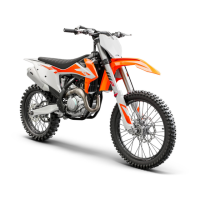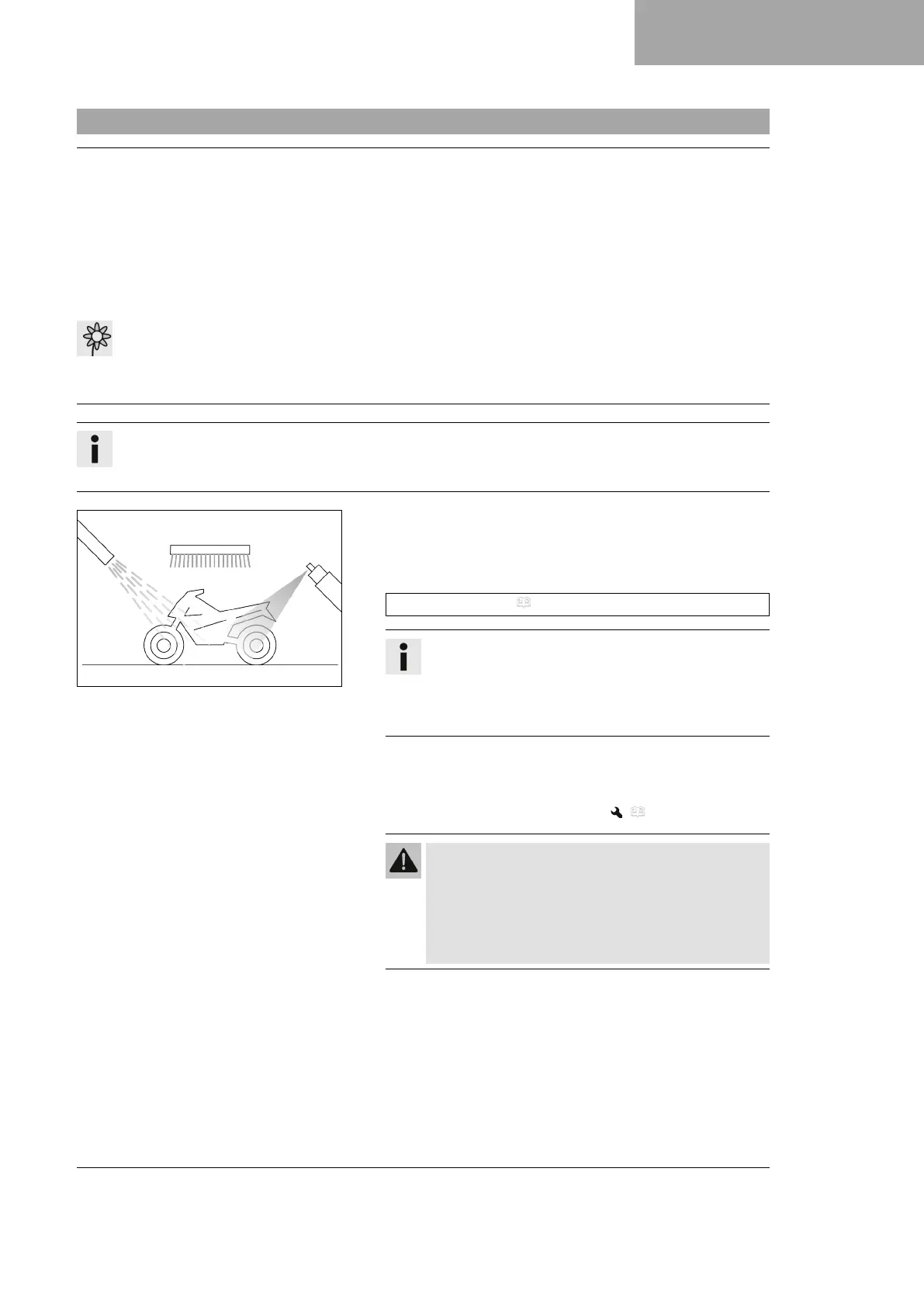CLEANING, CARE 17
107
17.1 Cleaning the motorcycle
Note
Material damage Components become damaged or destroyed if a pressure cleaner is used incorrectly.
The high pressure forces water into the electrical components, connectors, throttle cables, and bearings, etc.
Pressure which is too high causes malfunctions and destroys components.
– Do not direct the water jet directly on to electrical components, connectors, throttle cables or bearings.
– Maintain a minimum distance between the nozzle of the pressure cleaner and the component.
Minimum clearance 60 cm (23.6 in)
Note
Environmental hazard Hazardous substances cause environmental damage.
– Dispose of oils, grease, filters, fuel, cleaning agents, brake fluid, etc., correctly and in compliance with
the applicable regulations.
Info
To maintain the value and appearance of the motorcycle over a long period, clean it regularly.
Avoid direct sunshine when cleaning the motorcycle.
401061-01
– Close off the exhaust system to keep water from entering.
– Remove loose dirt first with a soft jet of water.
– Spray very dirty parts with a normal, commercially available
engine cleaner and then brush off with a soft brush.
Motorcycle cleaner ( p. 123)
Info
Use warm water containing normal motorcycle cleaner
and a soft sponge.
Never apply motorcycle cleaner to a dry vehicle; always
rinse the vehicle with water first.
– After rinsing the motorcycle with a gentle spray of water, allow
it to dry thoroughly.
– Remove the closure of the exhaust system.
– Empty the carburetor float chamber. ( p. 101)
Warning
Danger of accidents Moisture and dirt impair the
brake system.
– Explain to your child that he or she must brake
carefully several times to dry out and remove dirt
from the brake linings and the brake discs.
– After cleaning, let your child ride the vehicle a short distance
until the engine warms up and the brakes have dried due to
careful application of the brakes.

